Egypt vs. Tunisia: Which is best to travel?
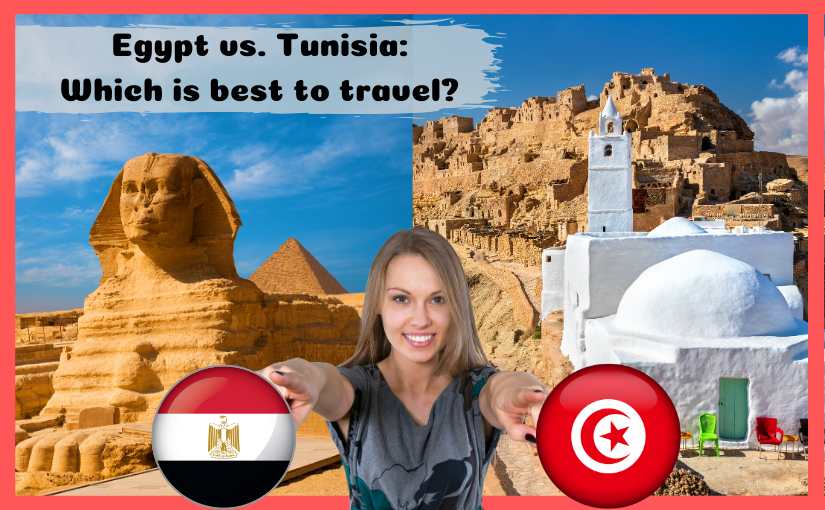
Egypt and Tunisia are both countries that have an amazing past and are filled with ancient treasures. They offer the beauty of the desert coupled with some of the best diving spots in the world. Each country is rich with history, though if you’re looking for Wonders of the World you know where to go. Tunisia is famed for the Holy City and capital of the Islamic religion. It also offers a number of enticing tourist attractions and a cheaper overall cost. Egypt’s beauties line the shore of the Nile with architectural wonders that date far back. And don’t think it’s all just sand and deserts while you’re there; Egypt is home to some of the clearest beaches you’ll ever see and there are shipwreck dive sites in Tunisia that will dim any other diving experience you’ve ever had.
With a similar climate and cuisine, it can be difficult to know which destination to choose. Take a look at this comprehensive guide to figure out which country is best for you.
What is the history behind Egypt and Tunisia and how can you experience it?
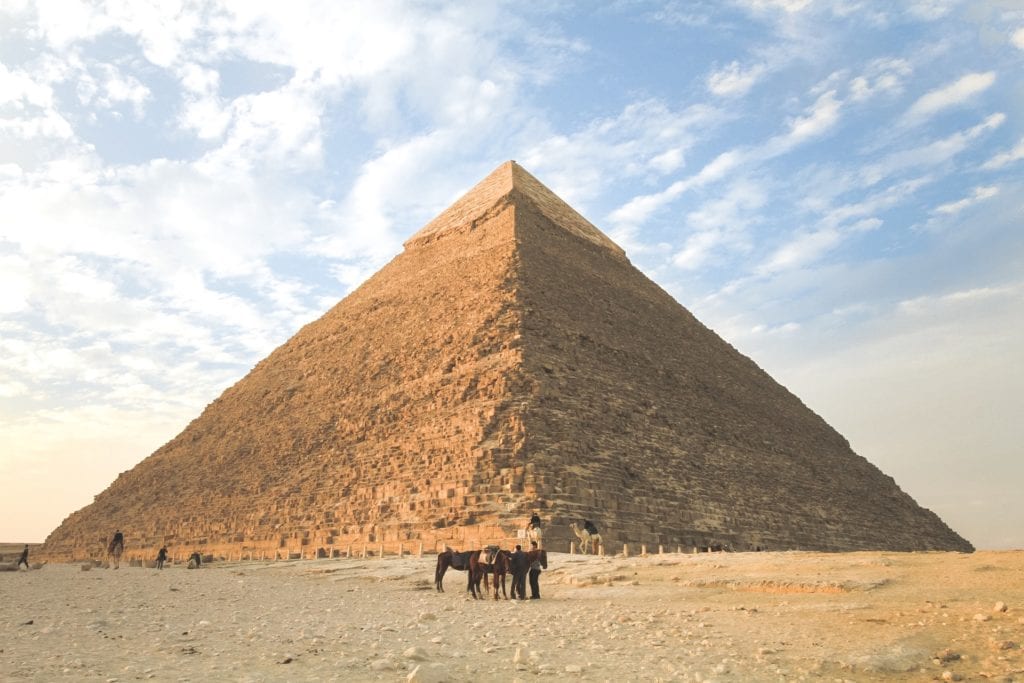
The Nile River has long since been the reason for Egypt’s thriving civilization with its fertile banks and creative minds. You’ll see so many examples of its past as ancient Egypt and under Greek rule or from Roman Egypt or early-Islamic Egypt even today; these remnants can be seen in the country’s culture, lifestyle, food, and much more.
Egypt is home to the ancient art of belly dancing, and many restaurants offer a live show for diners. There are also classes and tours available for both beginner and advanced belly dancers. The Museum of Egyptian Antiquities offers tourists the chance to immerse themselves deeply in the culture and history of Egypt. Based in Cairo, the museum showcases hieroglyphics, the gold mask of Tutankhamen and a number of statues and mummies. Tourists will also want to make a stop at the Valley of the Kings, to see the tomb of Tutankhamen and Nefertiti.
Tunisia’s history dates so far back that the original settlers were those of today’s Berber tribes. The country has been influenced by the nomadic people of Libya and Gaetulians, before the Romans, Persians, and Moors eventually settled in. Spiritualists and members of the Islam religion will want to visit Tunisia to see the holy city of Kairouan. The sacred city is the Islamic Cultural Capital and a World Heritage Site. The National Bardo Museum is rich in history; however, it is rated second to the Egyptian Museum of Cairo. With the largest collection of mosaics in the world, the Museum offers a unique glimpse into millennia of Tunisian history. The museum was founded in 1888 and is housed in an old Tunisian palace.
What are the most beautiful places in Tunisia and Egypt?
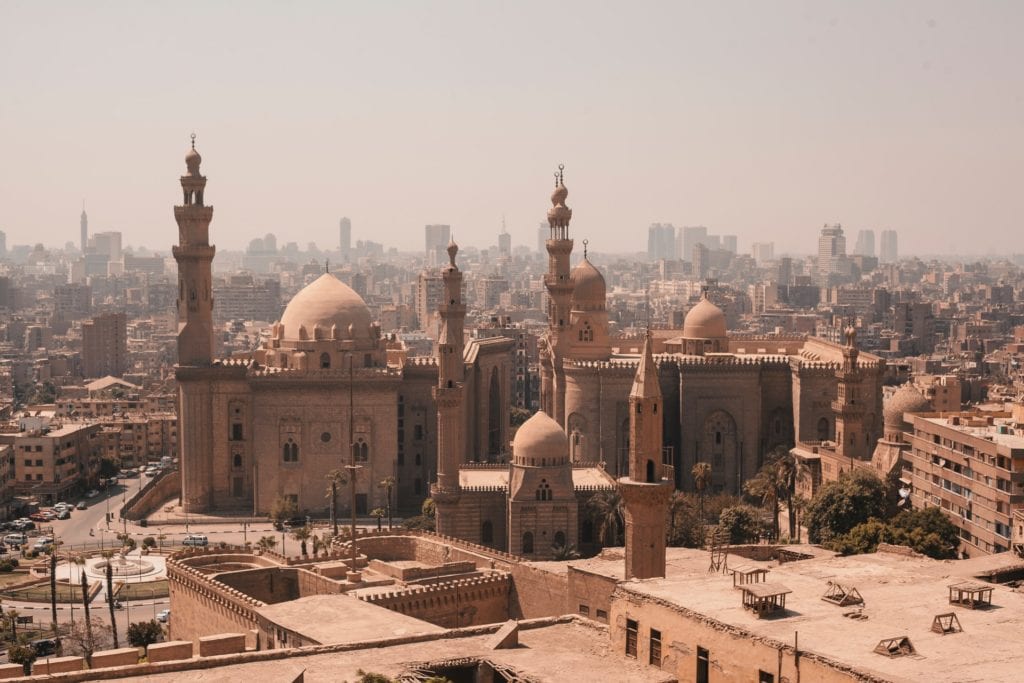
| AT A GLANCE | |
| TUNISIA ● Sidi Bou Said ● Tunis ● Sousse ● Hammamet ● Carthage ● Kairouan ● Bizerte ● El Jem ● Monastir ● Matmata | EGYPT ● Aswan ● Giza ● Farafra ● Dakhla ● Saint Catherine ● Ismailia ● Qwna ● Minya ● Tanta ● Arish |
Egypt and Tunisia are both gorgeous destinations, and not only made up of a desert expanse. Egypt features the Nile river, the Red Sea, a 1800 mile coastline and the pyramids of course. It also has fourteen beautiful islands but 96 percent of Egypt is the dry, sandy desert. In contrast Tunisia’s coastline is 713 miles, with a far more diverse terrain. While approximately 25 percent of Tunisia is officially classified as desert, the rest of the country is still quite dry. There are several caves, mountains and volcanoes in Tunisia though, which are quite remarkable to explore.
The main river that runs through Tunisia is the Medjerda, and there are two inland lakes. The most beautiful aspect of both Egypt and Tunisia, is undoubtedly their gorgeous coral reefs. The Red Sea in particular is known for its turquoise waters and exquisite colored fish. The reefs themselves are gorgeous too, with exotic hues and organic shapes swaying in the waters. Egypt has more marine life on show for divers, with everything from sharks to octopus visible through the crystal waters. The top pick is definitely Egypt, for the pyramids and marine life.
What are the best attractions to visit in Egypt and Tunisia?
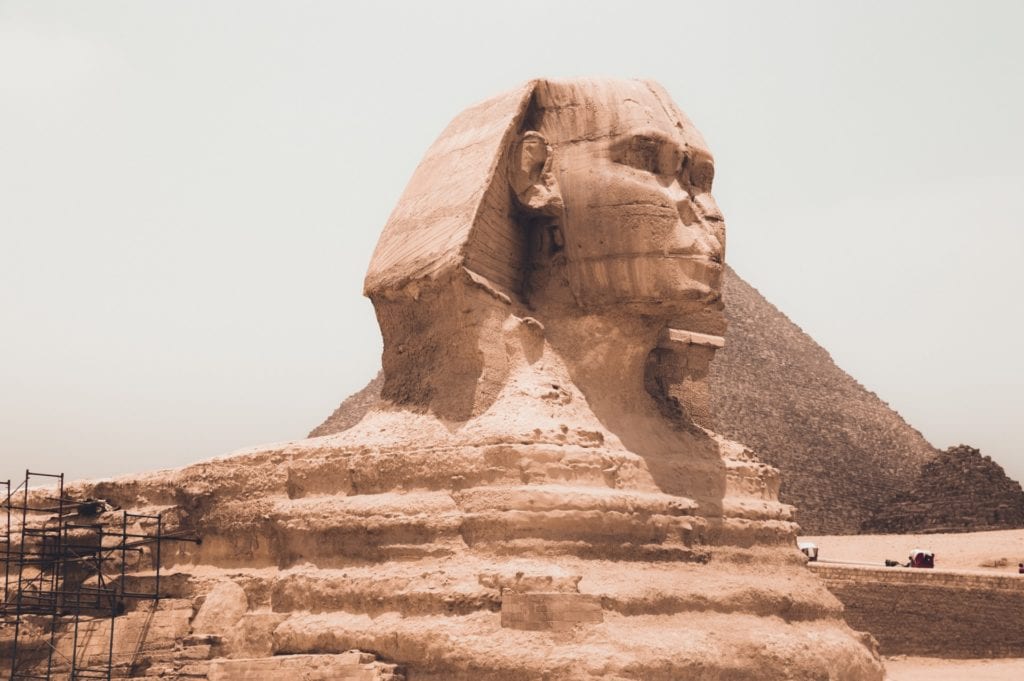
| AT A GLANCE | |
| TUNISIA ● Monuments of Tunis ● Djerba synagogue ● Art galleries in Sidi Bou Said ● El Jem colosseum and amphitheaters ● Beaches and marinas of Hammamat ● Sousse casinos ● Great Mosque of Kairouan ● Desert camping in Douz | EGYPT ● Giza Necropolis ● Great Sphinx of Giza ● The Egyptian Museum ● Valley of the Kings ● Temple ruins in Karnak ● Abu Simbel Temples ● Luxor Temple ● Philae |
Tunisia is a very underrated vacation destination and the natural beauty of the country will take your breath away at every turn. The cosmopolitan capital city of Tunis is where you can find all the modern luxuries and amenities you may seek during a holiday at very affordable rates. Even the coastal resorts on the outskirts of Monastir will have you posing for some Insta-worthy photos. There are tons of attractions and cultural sites throughout the country and some that shouldn’t be missed are the Monuments of Tunis, the Hammamat beach and marina, and the Great Mosque of Kairouan.
When you think of Egypt you think of pharaohs and pyramids and the Nile River – all aspects of an ancient civilization that continues to capture our hearts to this day. Just looking upon the architectural marvel of the Abu Simbel Temples will make you wonder just how they managed to carve the temples out of the massive rock formation during the 13th century BC. Other attractions in Egypt that will amaze you are the Great Sphinx of Giza, Valley of the Kings, and the Egyptian Museum.
What is the best outdoor activity in Tunisia and Egypt?
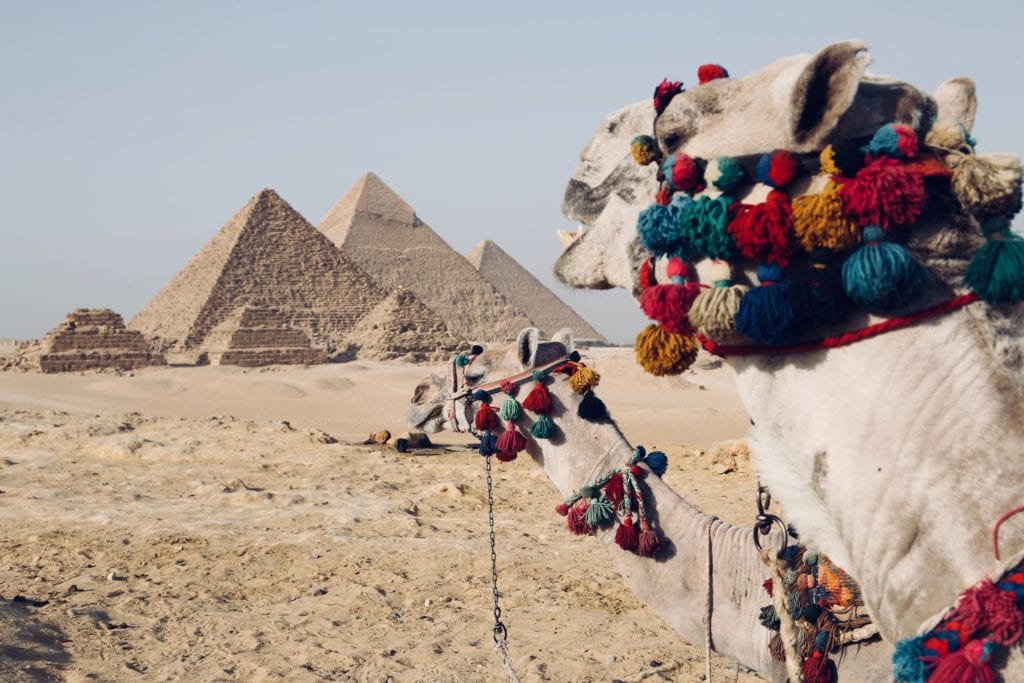
| AT A GLANCE | |
| TUNISIA ● Swimming/ Sunbathing ● Surfing ● Windsurfing ● Parasailing ● Scuba Diving ● Deep Sea Diving – Shipwrecks ● Snorkeling ● Hiking ● Camping ● Crocodile Farms/ Zoo Tours ● Horseback Riding/ Tours ● Camel Rides ● Wildlife Tours ● 4 Wheel/ Quad Bike Rides ● ATV/ Off-Road Tours | EGYPT ● Kitesurfing ● Paddleboarding ● Parasailing ● Swimming/ Sunbathing ● Snorkeling ● Scuba Diving ● Sailing ● Boating ● Fishing ● Trekking ● Hiking ● Camel Rides ● Star Gazing ● 4 Wheel/ Quad Bike Rides ● ATV/ Off-Road Tours |
Egypt and Tunisia both feature a striking combination of desert and coastline for the best of both worlds. As a result, each of these fabulous countries offers a range of activities related to the water and the sand. Travelers can experience the beauty of the desert from a camel’s back, or soaring above in a hot air balloon. Snorkeling and scuba diving are offered in both countries, but in Egypt, you can swim with dolphins. You can also dive in one of the world’s top diving spots, the Red Sea. On the other hand, in Tunisia you can deep dive to see the majestic shipwrecks. Each destination has a number of islands for travelers to explore, and soak up the beauty of their natural surroundings.
Egypt is more popular than Tunisia, due to the fame of the pyramids, the Nile and the Red Sea. The benefit of visiting Egypt is that you can cruise the Nile and take in the view of ancient Egyptians. The fascinating culture-rich country also offers private plane tours, which aren’t common in Tunisia. However, Tunisia features an authentic experience of camping in the Sahara Desert. Both countries offer quad bikes for hire which are super fun to ride over the soft desert sand. The dunes also attract a number of sandboarders, while beginners can simply sit on the boards and slide down.
What is Egyptian and Tunisian art and architecture like?
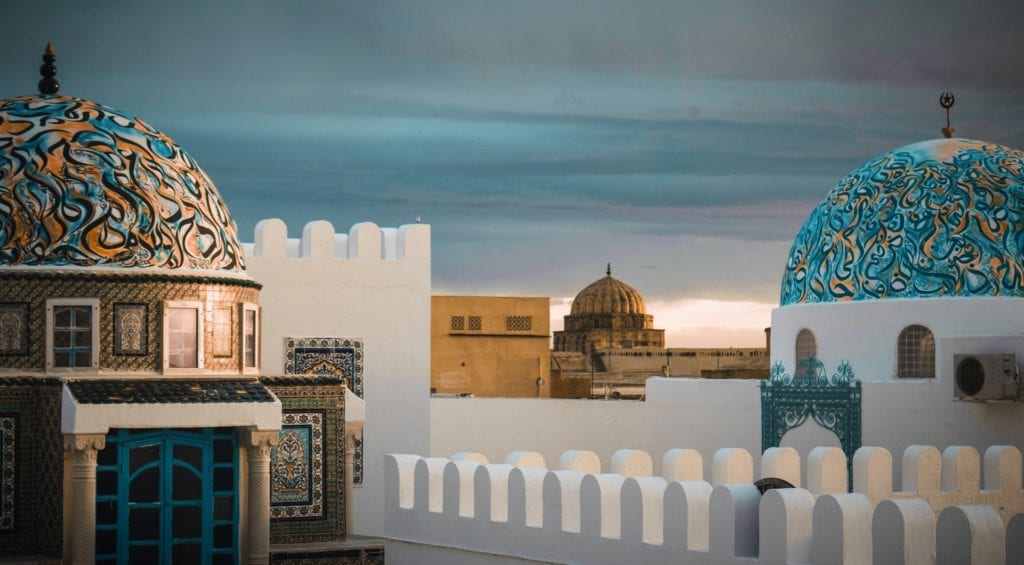
| AT A GLANCE | |
| TUNISIA ● George Sebastian Villa ● Kalaout el-Koubba ● Amphitheatre of El Jem ● The Great Mosque of Kairouan ● The Doors of the Medina ● Avenue Habib Bourguiba ● Marche Central de Tunis, Fondouk El Ghala ● El-Ahmadi Mosque ● Synagogue Keren Yéchoua de La Marsa ● Palais Abdelia ● Tunis City Hall | EGYPT ● The Great Pyramid of Giza ● The Great Sphinx of Giza ● Valley of the Kings ● The Karnak Temple ● Abu Simbel Temples ● Colossi of Memnon ● Luxor Temple ● Temple of Hatshepsut ● Pyramid of Djoser ● The Pyramid of Sneferu |
The pyramids of Giza are one of the Seven Wonders of the World, and feature high on many a bucket list. The beautiful structures were built as tombs for ancient pharaohs, and date back to approximately 2600 BC! There is also the legendary Sphinx to be seen, a giant sculpture of a cat with a human head. Tourists are allowed to enter inside the pyramids, although apparently not much can be seen from within. Egypt is also home to a number of awe-inspiring ancient temples, their pillars towering high from the desert sands. The ruins of these incredible historical architecture are still mostly intact, testimony to the construction of the time.
While Tunisia does not offer any Wonders of the World, it still has some pretty impressive architecture. The Amphitheater of El Djem is a World Heritage site, the largest Roman remains in North Africa. Located in the town of El Djem, the gladiatorial arena was built to hold 35000 spectators. The film “Gladiator” was filmed at the location, adding to its tourist appeal. Tunisia also offers the unique opportunity to experience the century old Berber culture, including their famous pottery. Matmata is another popular attraction in Tunisia, as it was the set of the first Star Wars film.
What is the weather like in Egypt and Tunisia?
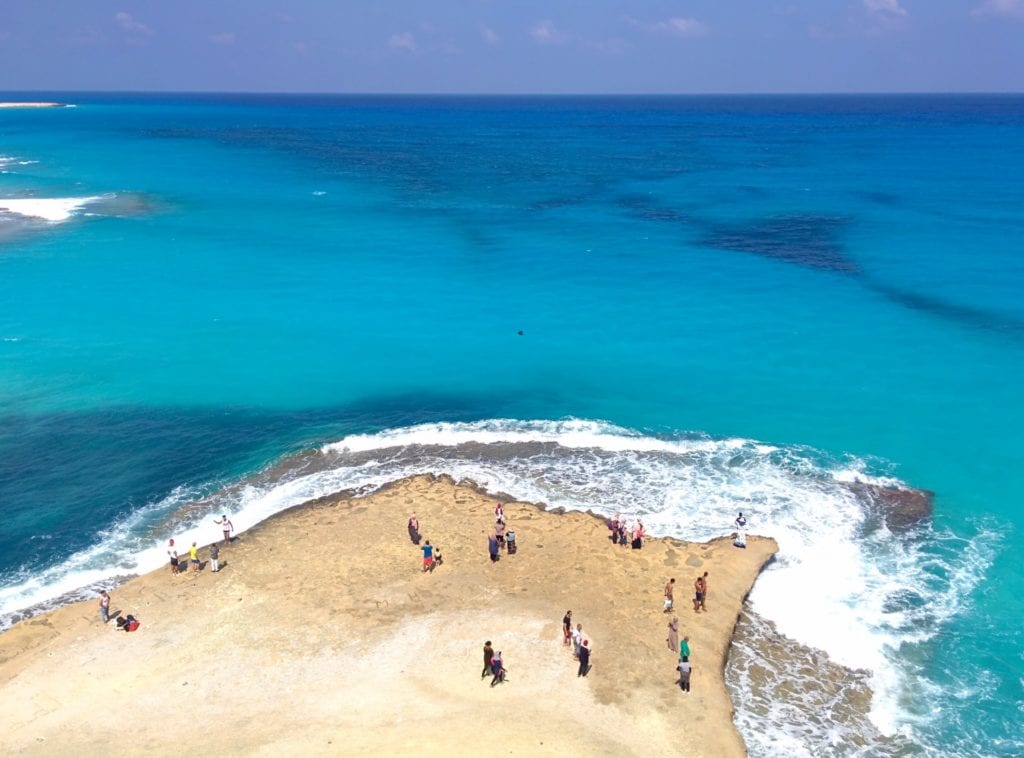
Although both countries are considered Mediterranean, the climates of Egypt and Tunisia are slightly different. In Egypt the weather is either extremely cold or incredibly hot. Be sure to pack for both conditions as the night time can get surprisingly cool even in mid-summer. Winter in Egypt is cool, humid and windy with some rain. It can even snow on Mount Sinai during an Egyptian winter, but in summer temperatures reach up to 120 degrees Fahrenheit. The best time to experience Egypt is between September and April, when temperatures average at around 90 degrees Fahrenheit. The Red Sea is known for its warm waters, and scuba diving is pleasant year-round in many of the Egyptian waters.
Tunisia is also very hot in the summer months, with temperatures reaching a high of over 100 degrees Fahrenheit. Although not quite as hot as Egypt, the summers are particularly dry. The best time to visit Tunisia is between April and June, or alternatively during September and October. These are the shoulder seasons for Tunisian tourism, so you won’t have to fight with the crowds. While the heat of Tunisian spring and autumn can go on for weeks, the temperature cools in the evenings. With such similar climates, it seems that you will have to base your decision on something other than the weather!
What are the best months to visit Tunisia or Egypt?
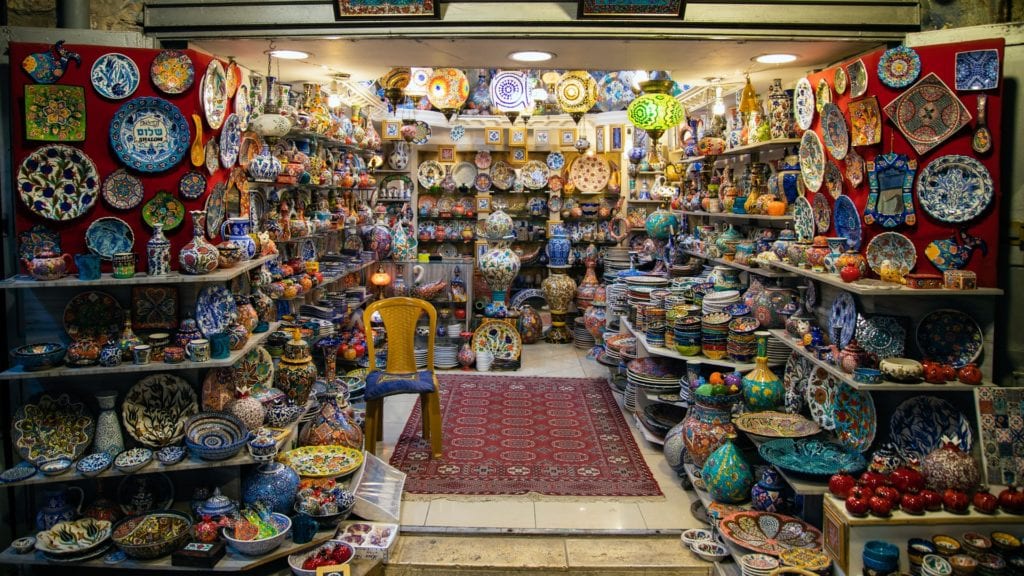
| AT A GLANCE | |
| TUNISIA ● March to June; the spring months ensure that the weather is the perfect combination of sunny days and breezy nights ● Also in September/ October right after the heat of summer dies down and before the coldness of winter sets in | EGYPT ● December to February; winter is the most popular tourist season because of the warm and sunny weather ● If you’re more focused on savings, go during the summer months; the heat and humidity keeps the flocks of tourists away |
The best time to visit Egypt is from December to February, which is typically considered their winter months. This may sound surprising to those who live in the northern hemisphere but winters in Egypt are quite lovely and pleasant. It’s when the most tourists flock to the country so that they may avoid the heat and humidity you’d face there during the summer months. Because of its popularity with tourists, the winter season is also when you will find most of the attractions open. Though most of it is open all year long, there are certain pop-ups that come up during busier seasons. If you can’t visit Egypt between December and February, your best bet would be from March to April or October to November which is when the seasons transition and you’ll see some respite from the heat.
The best time of the year to visit Tunisia is between March and June. These spring months ensure that the weather is the perfect combination of sunny days and breezy, but not cold, nights. It’s also the time of the year when Tunisia’s capital city comes alive with an array of pop-up establishments coming up as locals travel from afar to make a living off the tourist season. These establishments add a buzz to Tunisia that you’ll miss if visiting any other time of the year. But if you can’t travel here between March and June, then the next best time would be September/ October right as the heat of summer dies down but before the coldness of winter sets in.
What should I pack when going to Tunisia or Egypt?
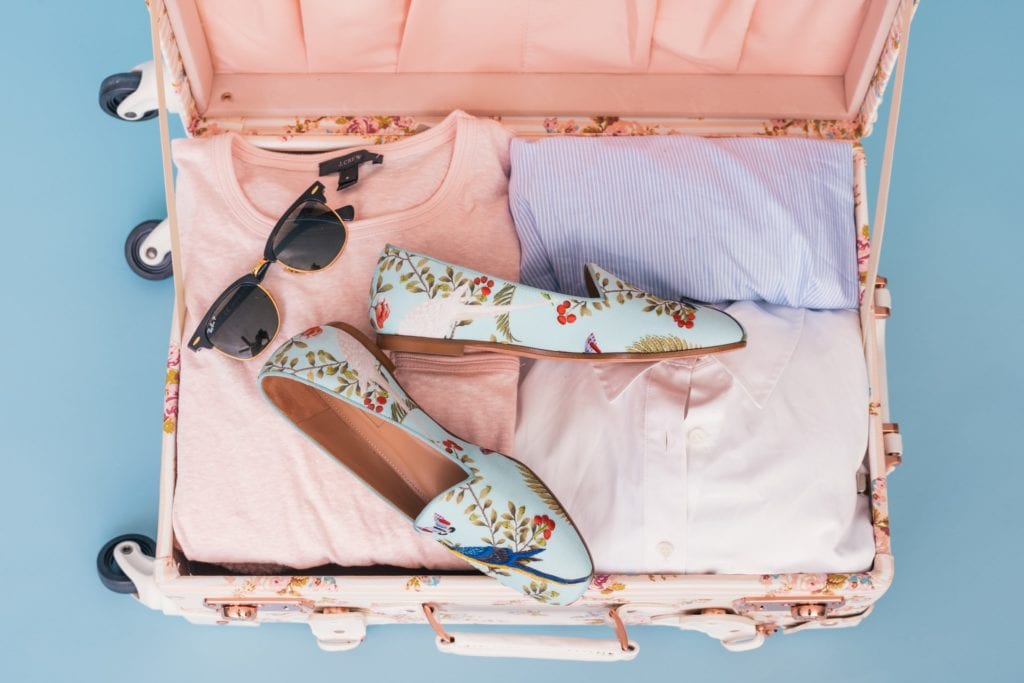
One of your major questions may be “what should I pack when traveling to Tunisia or Egypt?” They are not as renowned as other vacation destinations and you may not even know what the atmosphere is like – I know tons of people who randomly pick places to visit just so they go in blindly and experience something new. Here are a few suggestions on what to pack when visiting Tunisia or Egypt:
- Lightweight, loose-fitting clothing that will keep you cool during the hot and humid summer months
- Plenty of ankle-length shirts or pants, especially for women; this is helpful in general but also if you’re planning on visiting and cultural or religious sites
- A shawl or cardigan comes in handy as well
- Comfortable shoes because there will be a lot of walking and the terrain will not always be paved; flip flops for the beaches
- Protection from the sun: sunscreen, hat, sunglasses
- Swimsuit and cover-up if you’re visiting any major hotels with a swimming pool
What is the currency in Egypt & Tunisia? How much would it cost to travel to Tunisia or Egypt?
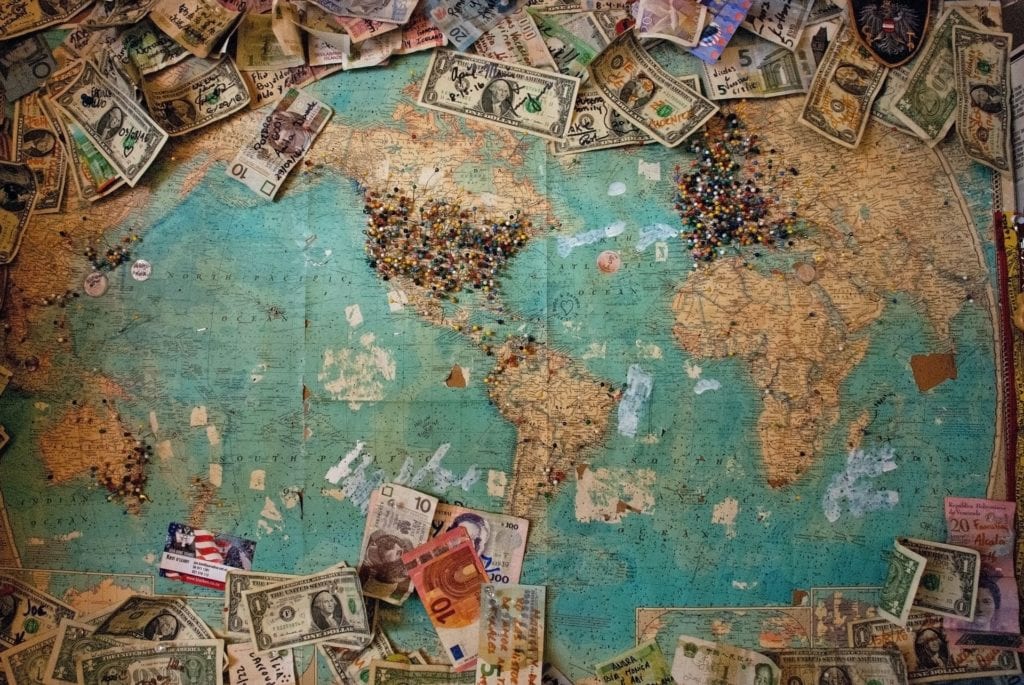
| AT A GLANCE | |
| TUNISIA ● Currency: Tunisian Dinar or TND ● 1 USD = 2.77 TND ● Average hotel price daily per couple: $50 ● Average daily expenditure per person while in Tunisia: $18; this includes meals, local transportation, and tickets to local attractions | EGYPT ● Currency: Egyptian Pound or EGP ● 1 USD = 15.69 EGP ● Average hotel price daily per couple: $26 ● Average daily expenditure per person while in Egypt: $25; |
The average daily cost of a low-budget holiday in Egypt is $15, excluding accommodation and food. Hotels generally charge an average of $26.00 for a couple’s bedroom and food costs approximately $10 per day ($3.50 average per meal).
Surprisingly hotels in Tunisia are pricier than Egypt at an average of $50 per day, per couple. However, food and other expenses are typically much lower and Tunisia is known to be the cheaper country. At the end of the day you can find bargains in either country, and both are more affordable than Europe.
In Egypt the local currency is the pound, the Egyptian pound that is! Euros, dollars and sterling notes are all accepted by many establishments in Egypt. However, most local businesses will charge extra for anything other than Egyptian pounds. In Tunisia, the currency is the Tunisian Dinar and it is currently almost five times more valuable than Egyptian pounds. Despite this, Tunisia is still better value for money and British pounds, Dollars and Euros are all happily accepted.
Does Tunisia or Egypt have the best hotels?
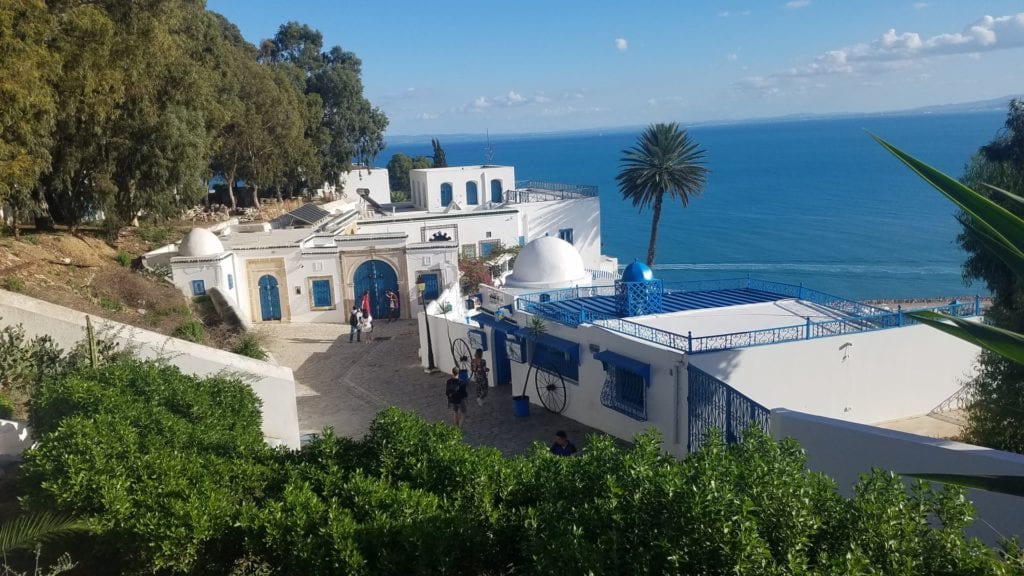
| AT A GLANCE | |
| TUNISIA ● Four Seasons Hotel Tunis ● Anantara Sahara Tozeur Resort & Villas ● Iberostar Selection Royal El Mansour ● The Residence Tunis ● Ramada Plaza by Wyndham Tunis ● Hotel Ain Meriam Bizerte ● La Badira | EGYPT ● Hilton Pyramids Golf ● Jaz Aquaviva ● Four Seasons Hotel Cairo at Nile Plaza ● Sentido Mamlouk Palace ● Marriott Mena House, Cairo |
Egypt and Tunisia both have a wide array of accommodations to choose from, making it the perfect vacation destination for any kind of traveler. A quick search online will leave you with numerous choices for the more economical traveler, from hostels to Airbnbs. More discerning vacationers will be glad to know that both Tunisia and Egypt have several high end hotels that house everything from award-winning restaurants to renowned spas.
If you’re traveling from the United States, don’t get thrown off when brands such as Marriott or Hilton are considered high end. It’s actually quite common for these brands to be resort-style properties or five-star properties abroad.
Is Egypt or Tunisia dangerous for tourists?
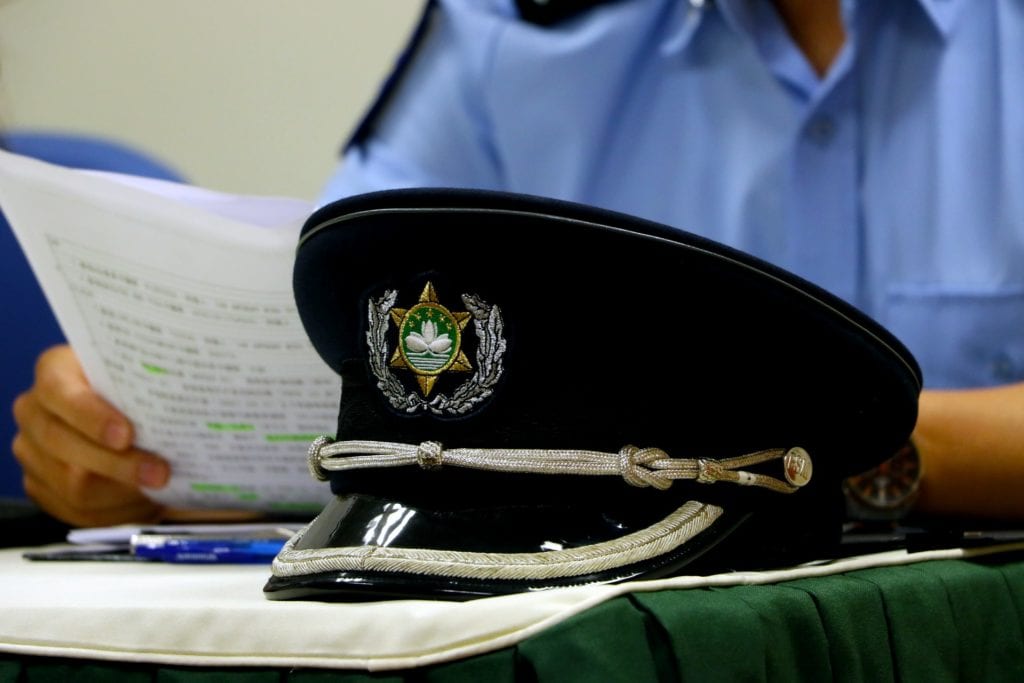
Given that both Egypt and Tunisia are located in Africa, it’s surprising that the countries are actually fairly safe. Statistically, Egypt is rated 75.23 percent safe to walk alone during the day, and Tunisia follows closely behind at 73.10 percent. Even at night the risk is only moderate, with Egypt coming in at 51.63 percent safe and Tunisia at 48.58 percent. These numbers reflect the low chance of a mugging or violent crime.
However, Egypt has been the victim of a number of terrorist attacks, including four in 2018 and three in 2019. These attacks typically target mosques and churches, due to the religious warfare of the region. While it is unlikely that foreigners will be marked, there is a risk of an attack happening in a public place and causing serious harm. Tunisia is also plagued by terrorism, and is currently in the midst of a declared state of emergency.
Despite the risks tourism is picking up in the regions, with authorities giving the go-ahead for tourists to visit. It is generally advised to steer clear of Tunisian borders and to stay vigilant at religious sites or events. The chances of being caught in a terrorist attack are statistically unlikely. The positive spin-off is that the state of the economy has opened a window of opportunity for budget travelers. Many are heading to Tunisia and Egypt to experience the gorgeous coral reefs and see the pyramids for themselves.
What languages will you come across in Tunisia and Egypt?
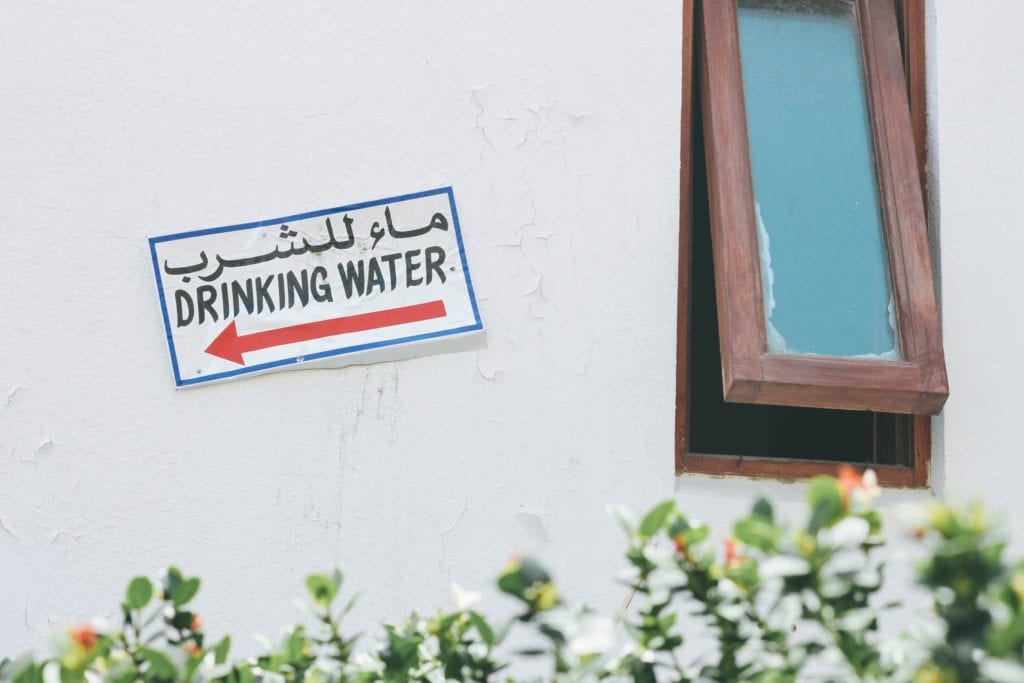
| AT A GLANCE | |
| TUNISIA ● Arabic (Standard) ● Arabic (Local Tunisian Dialect) ● French | EGYPT ● Arabic (Standard) ● Arabic (Local Egyptian Dialect) |
While visiting Egypt and Tunisia, you’ll find that many people will communicate with tourists and travelers in English – especially in major cities and/ or hotels, restaurants, and attractions. It’s also not uncommon for locals to communicate in several other European languages like French or Italian, probably because of how often they come across travelers from those countries.
Arabic is the official language in both countries so always remember to not get frustrated when you can’t communicate with someone in case they cannot speak English. Travelers have found that using a combination of sign language and translate apps on smartphones usually gets the job done.
How do you get around in Egypt and Tunisia?

In Tunisia there are a number of public transport options, but not all of them are reliable and safe. Camionnettes are pick-up trucks used in place of louage taxis and buses, and the only means of getting to rural areas. The Louages are shared minibus taxis that present a safer mode of transportation for inner city travelling. These are used by locals and leave when they are full, as opposed to running on a scheduled timetable. Louages cost roughly the same amount as buses, but are a faster and more convenient transport option. There are also a few trains, which tend to run late, though the network is extensive. As fuel is relatively cheap in the area, there is also the option of hiring a car or motorbike too.
There is a metro system in Cairo, with 61 stops that can take you all over the city, but not in the rest of Egypt. Taxis are common all over Egypt, and are an inexpensive mode of transportation. There is also a train system, best used for long distances only, as it is slow and unreliable time-wise. Egypt offers the option of Tuk Tuks, a three-wheeled taxi typical of Thailand, which can be cheaper than taxis. If you want to travel like a local, you can hop onto the backs of a pick-up truck, but these are not very safe. Then there are the microbuses, similar to the Louages of Tunisia, with no set schedule. In Egypt there are some areas where tourists are not permitted to use the microbuses.
What is the traditional drink and food in Tunisia and Egypt?
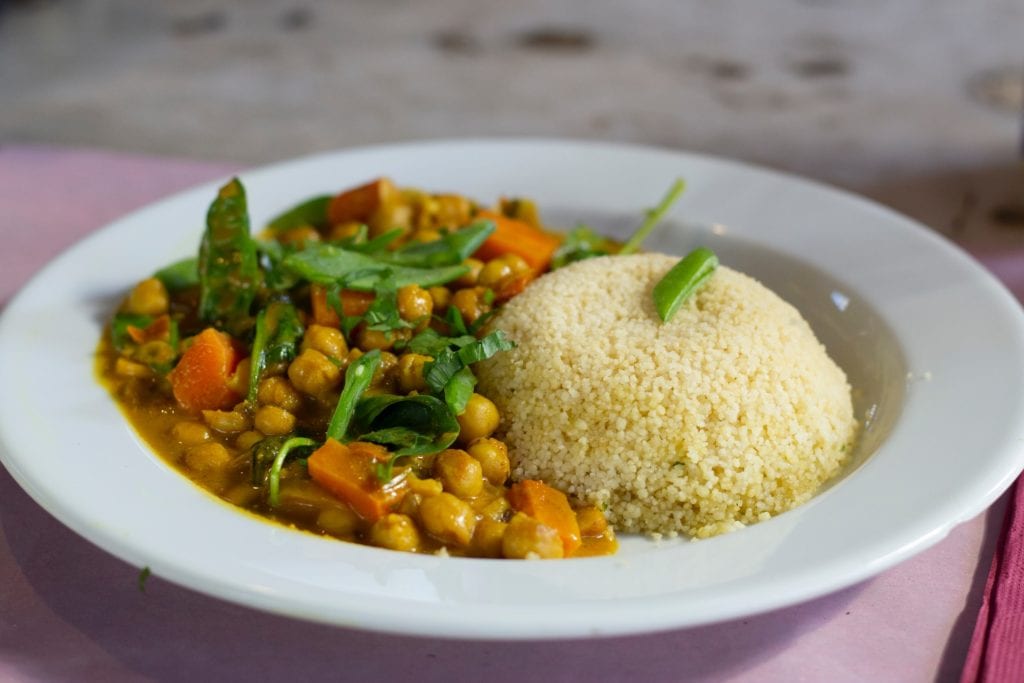
| AT A GLANCE | |
| TUNISIA ● Borek (turnovers stuffed with minced meats, eggs, tuna, cheese, or a number of other fillings) ● Tajine (an egg-based dish similar to a frittata; often topped with different meats and cheeses) ● Couscous (a staple you’ll find everywhere) ● Makroudh (sweet pastries stuffed with dates) | EGYPT ● Ful wa Ta’meya (a vegetarian dish that is considered the Egyptian version of ‘fast food’) ● Kushari (a combination of macaroni, rice, lentils, and delicious toppings) ● Hamam Mahshi (stuffed pigeon that is usually cooked during special occasions) ● Beef/ chicken shawarma (though not native to Egypt, the local version is delicious) |
Both Egypt and Tunisia offer a range of simple, healthy cuisine typical of a Mediterranean diet. Emphasis is on plant-based whole foods, making both countries ideal for vegetarians and vegans alike. Legumes are a staple in many of the traditional dishes, but there are also plenty of meaty options. Meat eaters beware that if you aren’t comfortable with eating rabbits, that they might be on the menu in Egypt! Mediterranean influences include the delicious mezze platters, hummus, shawarmas and baba ganoush. Kebabs and Dolmades are also readily available.
Falafel, couscous and salads are also widely available in each country and this makes for a healthy and nutritious trip! Tunisia and Egypt are both famous for their dates, which are harvested from mid-September to December. Not to be missed is the delicious “Date Candy” which is said to be a 3600 year old recipe. The sweet dessert is made by stuffing dates with chopped nuts which are then “fried” in honey to seal them. Date balls and pitted dates are also popular in both Tunisia and Egypt, but the best way to taste these sweets of nature is fresh.
What unique customs will I come across in Egypt and Tunisia?

Egypt and Tunisia both follow most of the same local customs and etiquettes as other Muslim countries. Some that might stand out to you while visiting these countries are:
- Take off your shoes before entering someone’s home; not expected in public places or hotels
- Bring gifts when you visit somebody; it’s usually a bunch of fruit or maybe some chocolates and cookies
- Always use your right hand to shake hands, wave hello, or generally greet someone
- Always use your right hand while eating
- Avoid talking about religion or politics in a group setting (like if you’re staying in a hostel with people you don’t know or are chatting with other travelers
- It’s expected for people to respect the elderly, from acknowledging them when they walk in to offering your seat to them in public transportation
- Tipping is not expected but is appreciated
- Do not take photographs carelessly; taking photographs of local women or children is not appreciated
- Take extra care to dress more modestly if you’re visiting during the month of Ramadan
- It’s also good to note that public displays of affection between homosexual or heterosexual couples is taboo and not generally accepted; technically, it’s illegal for non-married couples to share a hotel room together so some travelers have suggested wearing wedding bands just to avoid any hassles
Is it easier to get into Egypt or Tunisia visa-wise?
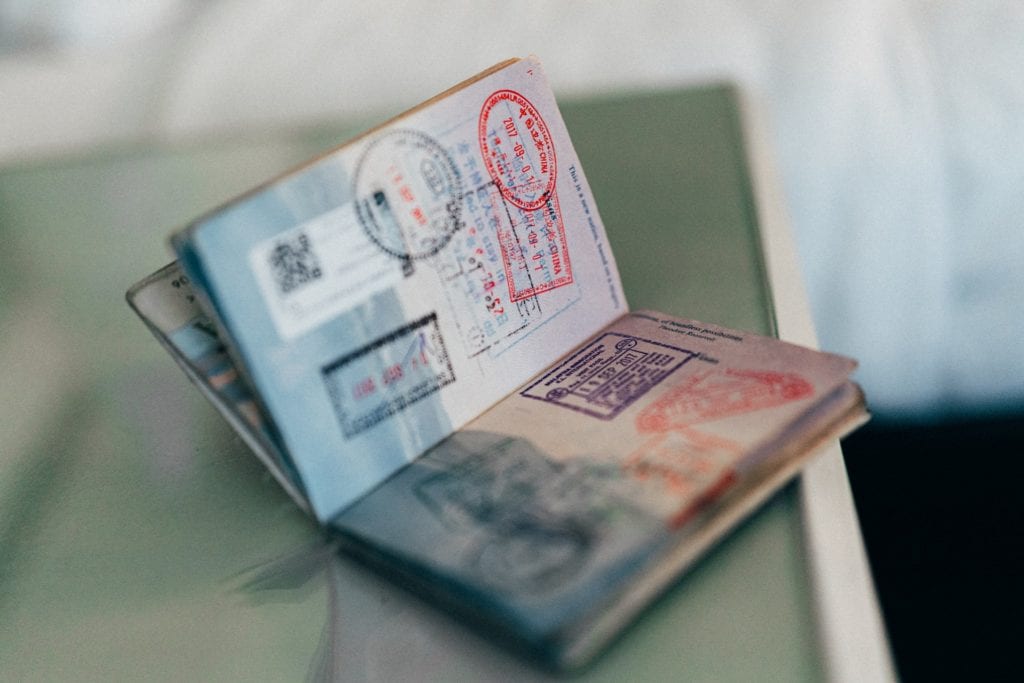
Citizens of the United States, United Kingdom, Canada, Australia, and EU Nationals are some of the few that are eligible to obtain a visa on arrival when visiting Egypt or Tunisia. Others may also include New Zealand, Croatia, Japan, Georgia, Republic of Korea, Norway, Russian Federation, Macedonia, Ukraine, and Serbia. For US Citizens, a visa is not required for entry into Tunisia if your trip is less than 90 days long.
Egyptian visas cost $25.00 USD per person and the on arrival airport offices are known to only accept cash (USD) so come prepared. They don’t accept other currencies but do have currency exchange facilities available.
Travelers will also need to ensure that their passports are valid for at least six months from the date of entry. If your passport expires before then, you may be denied entry.
–
Egypt and Tunisia are both stunning countries and each deserve for visitors to come and spend time there to truly explore the lands, meet the people, and learn about the culture of each like it deserves. If you’ve visited either or both of these places, please share your experiences with us in the comments below!
Short infographic about Egypt vs. Tunisia:
